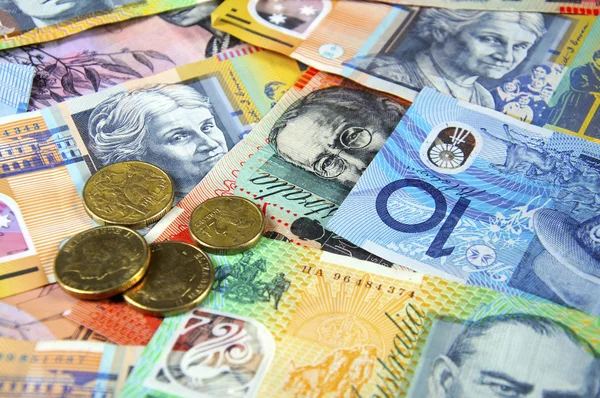Australian dollar is losing ground as the US dollar strives to recover recent losses.
The Australian Dollar (AUD) fell for the second consecutive day on Thursday. The AUDUSD pair fell after the announcement of good S&P Global Purchasing Managers Index (PMI) data from the United States (US) on Wednesday. The encouraging statistics may lessen the probability of rate The AUDUSD pair fell after the Federal Reserve (Fed) reduced interest rates in March. Furthermore, according to the CME’s FedWatch tool, market-wide bets on a Fed rate decrease in March have fallen to less than 40%, a huge drop from above 80% just a month ago.
Despite the positive US PMI statistics, the US dollar fell.
Australia’s dollar fell despite the announcement of improved preliminary Purchasing Managers Index (PMI) data from Australia on Wednesday. According to the Reserve Bank of Australia’s (RBA) Bulletin, throughout the last six months, businesses have typically anticipated a reduction in price growth, with the assumption that prices will remain over the RBA’s inflation target range of 2.0-3.0%. The Bulletin also states that slower growth of demand and higher competition are expected factors. This will contribute to a further slowdown in the increase of firm pricing in the coming quarter.
The PBoC may lower the Medium-Term Lending Facility (MLF) rate in the current quarter.
According to Chinese financial media, the People’s Bank of China (PBoC) may lower the Medium-term Lending Facility (MLF) rate this quarter. The announcement follows PBoC Governor Pan Gongsheng’s recent statement, which disclosed that the Bank would decrease the Required Reserve Ratio (RRR) by 50 basis points beginning February 5th. The RRR decrease is part of the central bank’s efforts to increase liquidity in the economy.
Despite the decline, RRR levels remain relatively high. The action is projected to release around CNY 1 trillion of extra accessible cash into the Chinese economy, providing additional liquidity to support economic activities and maybe relieve Given Australia’s tight trading links with China, financial conditions are supportive of the Aussie Dollar.
US GDP Annualized (Q4) is predicted to be 2.0%, compared to 4.9% the previous quarter.
Despite the negative US Treasury yields, the US Dollar Index (DXY) is attempting to recover from its recent losses. However, the US Dollar (USD) is under pressure due to risk-on market mood. Ahead of the Federal Reserve’s (Fed) interest rate announcement on January 31.
Investors will most likely pay attention to the preliminary US Gross Domestic Product Annualized reading. Which is expected to be 2.0% in the fourth quarter, down from 4.9% the previous quarter. This statistics will provide insights into the overall economic performance and may influence market expectations about the Fed’s monetary policy stance.
Daily Market Movers: Australian Dollar decline after improved US PMI
The distance to cross to put prices back into the RBA’s target band.
The People’s Bank of China maintains a constant Loan Prime Rate (LPR) for both one and five years. The rate has remained at 3.45% for one year and 4.20% for five years.
The US S&P Global Manufacturing PMI rose to an 11-month high of 50.3 in January. Exceeding expectations of a steady 47.9.
The US Services PMI jumped to 52.9, compared to the predicted level of 51 and 51.4 previously. Composite PMI increased from 50.9 to 52.3.
The Leading Economic Index for December improved somewhat, from -0.5% in November to -0.1% in December. According to the US Conference Board. This exceeded the expectations for an improvement. to -0.3%.
The preliminary US Michigan Consumer Sentiment Index increased to 78.8. In January from 69.7 the previous month, surpassing the projected result of 70.









